Anna Freud and Her Work Following Sigmund Freud
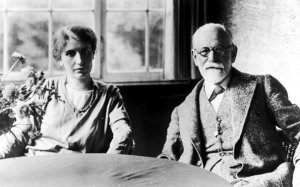

Written and verified by the psychologist Gema Sánchez Cuevas
Anna Freud was an unwanted daughter. She was the youngest of 6 children and the only one who became a devout and almost self-denying disciple of her father, Sigmund Freud. She was a “guinea pig” for psychoanalysis and also an heir to his legacy. A good part of what Anna Freud contributed to the field of child psychology was pioneering and truly invaluable.
The name of this interesting woman fortunately did not fade into the haze of oblivion. Her name hasn’t disappeared into the void that other female figures were pushed into by the great men in their lineage. Ada Lovelace is one, a remarkable mathematician and forerunner in programming languages; a woman who for many was no more than Lord Byron’s outstanding daughter.
Anna Freud was also the outstanding daughter of the great father of psychoanalysis. She was a girl who came into the world unbidden but quickly managed to carve a niche among her many siblings and family members who blindly idolized her father. Anna was unruly, restless, and sought more than anything the admiration of her father. Unfortunately, he was a man who treated her more as a patient than a daughter.
It was in the 1920’s that, as a member of the Vienna Psychoanalytic Association, her life began a new direction. Sigmund Freud had already been diagnosed with oral cancer and Anna was determined not to leave her father at any time. However, she thought she could now direct her career into other fields. Instead of practicing as a psychoanalyst, she decided to treat young children pedagogically under psychoanalytic guidelines.
What began in Vienna in 1925 continued in England and in the context of World War II. It was a key stage where her true work would begin. It would continue, in a certain way, that of the now-deceased Sigmund Freud, but incorporate other approaches.
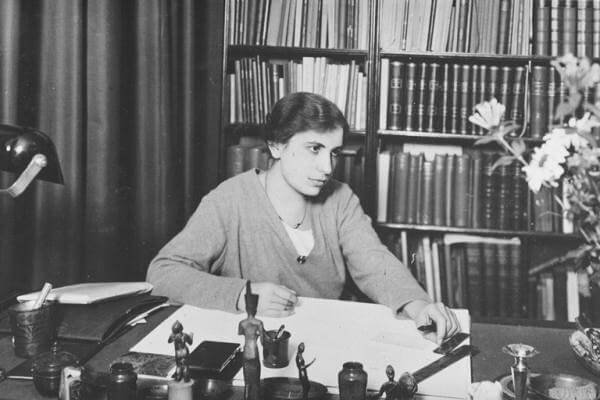
Anna Freud and the psychology of the ego
Anna Freud was always a practical woman. She didn’t like to theorize too much. Thus her books are full of interesting case studies as a basis for justifying and developing her ideas. What “Miss Freud” most wanted was for psychoanalysis to have therapeutic use in the lives of people, especially children.
- Throughout her life, she was much more concerned with mental dynamics than with mental structure. Hence, she was more interested in the SELF than in the IT and in the unconscious part of her mind that her father so passionately loved.
- Anna Freud is well-known for her book “Ego and the Mechanisms of Defense.” She explains how each one of these dynamics works. In fact, she even dedicated a special section to the use of defense mechanisms in children and adolescents.
- She also dove into an interesting idea, that most of us use defense mechanisms and there is nothing pathological about it. Anna Freud’s focus was not so much on the symptoms of possible abnormalities, which her father focused on. She also sought to combine his theoretical prism with a more practical psychology.
- Repression: a response to the need to contain the thoughts and emotions that keep anxiety going.
- Projection: the ability and habit of seeing one’s own defects in another person.
- Displacement: transferring negative feelings towards third parties.
- Regression: returning to a younger age psychologically, with the habits and patterns of this age.
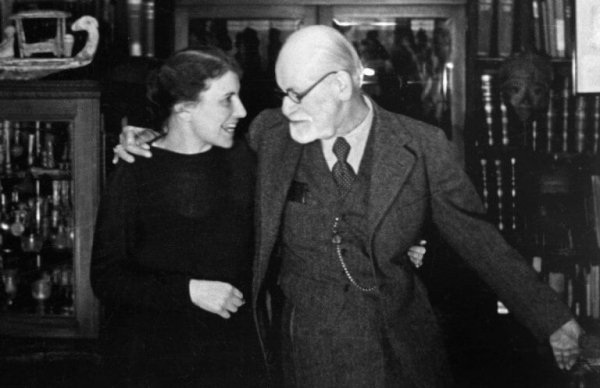
The British stage and child psychology
In 1941, Anna Freud opened a kindergarten and several homes for children on Wedderburn Road, in Hampstead, London. In those days she had also read Maria Montessori and was moved by all those little ones, traumatized by war. So she decided it was time to move forward and work for progress in this field that interested her so much.
- She based the development of her theories on his father’s approach. However, she was clear that when dealing with traumas, she would leave the “It and the superego” aside to focus on the “I”.
- Also, when Anna began her psychotherapy sessions, she avoided as much as possible assuming the “paternal” figure so typical of psychoanalysis. She knew children needed a warm, friendly, and relaxed environment in order to communicate comfortably.
- Anna Freud was the first to make use of games (play therapy) as a mechanism to enter the emotional world of the child. With games, her role as a therapist also changed. Instead of presenting herself as a distant authority figure, her aim was to deal with children using intimacy and their language.
So the classic therapist’s couch was set aside for real playrooms, a much more suitable context for children and spontaneous expression.
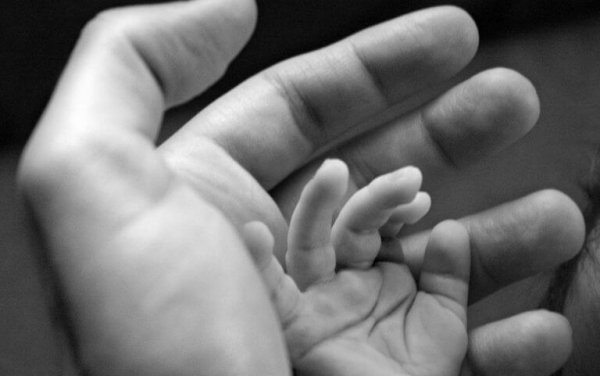
The importance of early relationships
Throughout her life Anna Freud defended the need to care for and address a child’s early relationships as an essential mechanism for proper development. Her work with children who had been abandoned or severely neglected, for example, laid the foundation for multiple subsequent lines of research.
Also, another pioneering initiative was the recommendation that children should not be hospitalized more than necessary. Nor should orphaned or abandoned children stay in orphanages for a long time. Children need family intimacy and a mother figure. Any distance from family relationships (or surrogates) causes stress, and fear, and has an impact on the child’s brain and psychic development.
Anna Freud worked to make her reception centers feel like “family units”. This way every child abandoned or traumatized by war found friends — siblings — and a surrogate mother or psychotherapist to treat their trauma and recurring nightmares.
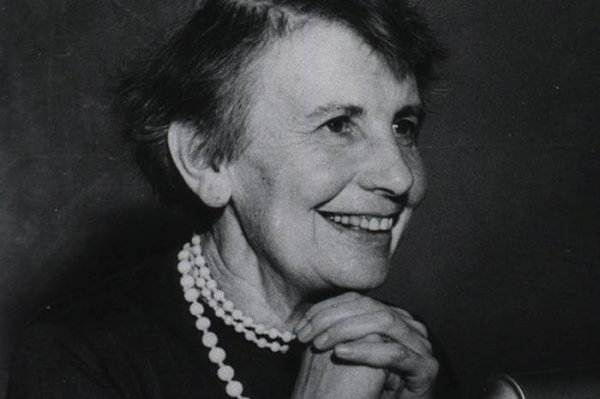
The “black demon”, as his father called her because at times she had quite a strong will and eccentricities, never betrayed the theoretical heritage of her father; in fact, she improved it. Thanks to her, the edges got smoothed down. She dealt with the loose, careless ends left by her father and his more shallow exploration of childhood education.
The therapeutic practice of Anna Freud was dedicated exclusively to children. Moreover, her very life was dedicated to protecting children lacking even basic care. She created multiple residential nurseries, a clinic, and a training center for psychotherapists specializing in child psychoanalysis.
Miss Freud died at the age of 82, and her mission was fulfilled. She was the mother of psychoanalysis and guardian of its progress.
Bibliographic references:
- Anna Freud (2004). Psicoanálisis del desarrollo del niño y del adolescente. Barcelona: Editorial Paidós Ibérica
- Sigmund Freud & Anna Freud (2014). Sigmund y Anna Freud. Correspondencia 1904-1938. Colección Psicología Profunda. Argentina: Ediciones Paidós
- Anna Freud (1980). El Yo y los mecanismos de defensa. Barcelona: Editorial Paidós Ibérica
Anna Freud was an unwanted daughter. She was the youngest of 6 children and the only one who became a devout and almost self-denying disciple of her father, Sigmund Freud. She was a “guinea pig” for psychoanalysis and also an heir to his legacy. A good part of what Anna Freud contributed to the field of child psychology was pioneering and truly invaluable.
The name of this interesting woman fortunately did not fade into the haze of oblivion. Her name hasn’t disappeared into the void that other female figures were pushed into by the great men in their lineage. Ada Lovelace is one, a remarkable mathematician and forerunner in programming languages; a woman who for many was no more than Lord Byron’s outstanding daughter.
Anna Freud was also the outstanding daughter of the great father of psychoanalysis. She was a girl who came into the world unbidden but quickly managed to carve a niche among her many siblings and family members who blindly idolized her father. Anna was unruly, restless, and sought more than anything the admiration of her father. Unfortunately, he was a man who treated her more as a patient than a daughter.
It was in the 1920’s that, as a member of the Vienna Psychoanalytic Association, her life began a new direction. Sigmund Freud had already been diagnosed with oral cancer and Anna was determined not to leave her father at any time. However, she thought she could now direct her career into other fields. Instead of practicing as a psychoanalyst, she decided to treat young children pedagogically under psychoanalytic guidelines.
What began in Vienna in 1925 continued in England and in the context of World War II. It was a key stage where her true work would begin. It would continue, in a certain way, that of the now-deceased Sigmund Freud, but incorporate other approaches.

Anna Freud and the psychology of the ego
Anna Freud was always a practical woman. She didn’t like to theorize too much. Thus her books are full of interesting case studies as a basis for justifying and developing her ideas. What “Miss Freud” most wanted was for psychoanalysis to have therapeutic use in the lives of people, especially children.
- Throughout her life, she was much more concerned with mental dynamics than with mental structure. Hence, she was more interested in the SELF than in the IT and in the unconscious part of her mind that her father so passionately loved.
- Anna Freud is well-known for her book “Ego and the Mechanisms of Defense.” She explains how each one of these dynamics works. In fact, she even dedicated a special section to the use of defense mechanisms in children and adolescents.
- She also dove into an interesting idea, that most of us use defense mechanisms and there is nothing pathological about it. Anna Freud’s focus was not so much on the symptoms of possible abnormalities, which her father focused on. She also sought to combine his theoretical prism with a more practical psychology.
- Repression: a response to the need to contain the thoughts and emotions that keep anxiety going.
- Projection: the ability and habit of seeing one’s own defects in another person.
- Displacement: transferring negative feelings towards third parties.
- Regression: returning to a younger age psychologically, with the habits and patterns of this age.

The British stage and child psychology
In 1941, Anna Freud opened a kindergarten and several homes for children on Wedderburn Road, in Hampstead, London. In those days she had also read Maria Montessori and was moved by all those little ones, traumatized by war. So she decided it was time to move forward and work for progress in this field that interested her so much.
- She based the development of her theories on his father’s approach. However, she was clear that when dealing with traumas, she would leave the “It and the superego” aside to focus on the “I”.
- Also, when Anna began her psychotherapy sessions, she avoided as much as possible assuming the “paternal” figure so typical of psychoanalysis. She knew children needed a warm, friendly, and relaxed environment in order to communicate comfortably.
- Anna Freud was the first to make use of games (play therapy) as a mechanism to enter the emotional world of the child. With games, her role as a therapist also changed. Instead of presenting herself as a distant authority figure, her aim was to deal with children using intimacy and their language.
So the classic therapist’s couch was set aside for real playrooms, a much more suitable context for children and spontaneous expression.

The importance of early relationships
Throughout her life Anna Freud defended the need to care for and address a child’s early relationships as an essential mechanism for proper development. Her work with children who had been abandoned or severely neglected, for example, laid the foundation for multiple subsequent lines of research.
Also, another pioneering initiative was the recommendation that children should not be hospitalized more than necessary. Nor should orphaned or abandoned children stay in orphanages for a long time. Children need family intimacy and a mother figure. Any distance from family relationships (or surrogates) causes stress, and fear, and has an impact on the child’s brain and psychic development.
Anna Freud worked to make her reception centers feel like “family units”. This way every child abandoned or traumatized by war found friends — siblings — and a surrogate mother or psychotherapist to treat their trauma and recurring nightmares.

The “black demon”, as his father called her because at times she had quite a strong will and eccentricities, never betrayed the theoretical heritage of her father; in fact, she improved it. Thanks to her, the edges got smoothed down. She dealt with the loose, careless ends left by her father and his more shallow exploration of childhood education.
The therapeutic practice of Anna Freud was dedicated exclusively to children. Moreover, her very life was dedicated to protecting children lacking even basic care. She created multiple residential nurseries, a clinic, and a training center for psychotherapists specializing in child psychoanalysis.
Miss Freud died at the age of 82, and her mission was fulfilled. She was the mother of psychoanalysis and guardian of its progress.
Bibliographic references:
- Anna Freud (2004). Psicoanálisis del desarrollo del niño y del adolescente. Barcelona: Editorial Paidós Ibérica
- Sigmund Freud & Anna Freud (2014). Sigmund y Anna Freud. Correspondencia 1904-1938. Colección Psicología Profunda. Argentina: Ediciones Paidós
- Anna Freud (1980). El Yo y los mecanismos de defensa. Barcelona: Editorial Paidós Ibérica
This text is provided for informational purposes only and does not replace consultation with a professional. If in doubt, consult your specialist.







